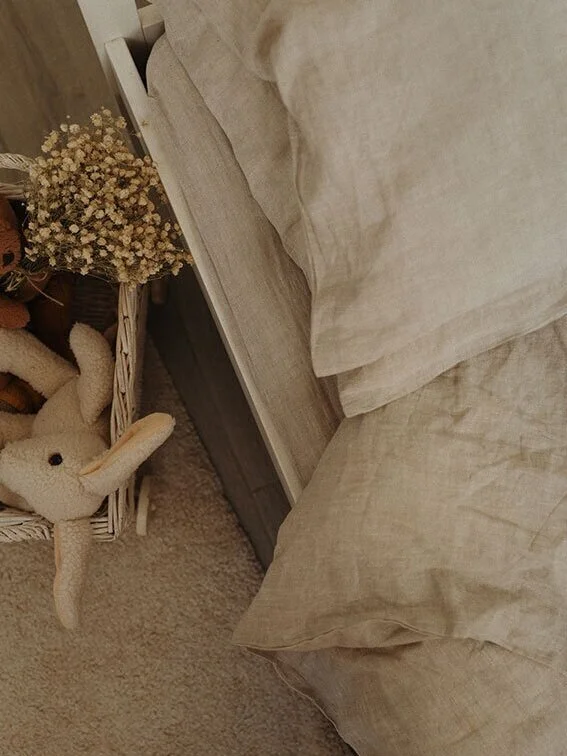Calming colours for children’s bedrooms
Sewing Wave
Anna Bell is the founder and creative director of Sewing Wave, an Israeli brand dedicated to surrounding children with quality textiles from birth. In this post, Anna will be talking about how to choose calming colours for kids’ bedrooms.
Your children’s room is their retreat. A safe environment for them to play, rest, and learn, which needs to provide comfort and privacy, but also promote brain development and protect their general health. Choosing the right colour scheme can be daunting, yet colour is one of the most important components when it comes to the design of their room. To help you create the calm environment they can strive in, we look at which colours can relax their senses, inspire their creativity, fuel their imagination, and improve their overall well-being.
Sewing Wave
Sewing Wave
Colours and emotions are closely intertwined. Research shows how colour affects our mind and body and impacts our thoughts and behaviours. When we look at a colour, our brain releases neurochemicals that trigger our mood and influence our mental and physical health. Minnesota University found that it also impacts our emotional state and our stress response. And that children are even more sensitive to colours than adults. Using a bright shade of red or orange around a very active child will most likely further boost their energy. For example, these hues have been judged hard to process for kids with Autism or ADHD, triggering agitation and uneasiness. So to boost your children’s happiness and relaxation levels, prefer calm, subdued tones on the walls, furniture and textiles of their nursery. These will evoke pleasant emotions and act as a natural stress management tool.
Cool colours as well as earthy neutral tones have a soothing, relaxing effect. Blues and greens, olives, chestnuts, ivories and stone greys are all found in nature, which is why we feel grounded, connected when exposed to them. But don’t disregard bright colours completely if you really like them. For example, studies show that babies feel unsettled in a mainly yellow room. However, they tend to feel calm in a room that combines yellow with green and blue.
So, whether you are deciding on the interiors of your newborn’s nursery or choosing new textiles for your older kids’ room, here are the colours to consider for a peaceful environment.
WHITE & BEIGE
White often symbolises clarity, innocence, and cleanness. It promotes harmony and rest. However, to prevent the room from looking dull and monotonous, make sure to go for warmer, creamy white versions (beige, ivory, vanilla, baby powder, etc.) or combine white with warmer tones.
For example, add yellow details such as pillows, curtains, boxes, furniture, etc. Some studies suggest that over-exposure to yellow can cause irritability and hyperactivity in children, but used with parsimony it can bring a touch of light that brightens up the space.
Lauriane Bueb
Kids Concept
GREEN AND BLUE
Naturally found in nature, green is typically associated with harmony and peace. Green symbolises birth, growth, and freshness, and it is considered a powerful stress reducer. Choosing pastel shades of green for your little one’s nursery can turn the room into an oasis of serenity and quietude, helping with focus and resulting in better sleep.
Shades of blue, from turquoise and pale to deep and aquamarine, also have a soothing effect. Adding blue to your child’s nursery can promote deep, relaxing sleep, boost imagination, and promote tranquillity. Painting your child’s bedroom walls blue can help increase focus and attention and balance hyperactivity.
As blue can also provoke gloominess and isolation, make sure to balance it with warmer hues or natural materials such as wood, jute, or rattan.
Marion Lanoe
Ferm Living
EARTHY TONES
Natural shades such as sand, nude, tan, olive, cream, lavender, or blush are excellent choices for a nursery as these colours are rich in warm tones and comfortable to be around. Make your child’s room more attractive and entertaining, play with textures and fabrics, and add details in bright colours (a chartreuse blanket, an orange pillowcase, or a turquoise bag chair).
Sewing Wave
Ferm Living













